Designing a permaculture backyard is a great way to start growing some of your own food and to create a sustainable landscape — even if you don’t have much land to work with.
The problem is that most information on permaculture techniques is written under the assumption that it will be used at a farm-sized scale on a piece of land that’s at least a couple of acres.
Thankfully, there are ways of adapting permaculture principles to create your own backyard permaculture garden. In this article, we’ll explain the principles of permaculture and how you can apply them on a smaller backyard scale.
What Are the 12 Principles of Permaculture?
In order to come up with a backyard permaculture design, first you need to understand the basic principles of permaculture that make it work. These are rules that you’ll need to follow whether you’re trying to create a permaculture system on a small or large scale.
1. Observe and Interact
You might have all sorts of fantastic ideas for how you’d like to design your property. But before you ever break soil, you should take some time to observe the natural systems that are already in place.
Slow down and see how your land naturally adapts throughout the seasons. You may want to do this step for up to a full year before you finalize your design.
2. Catch and Store Energy
Normally when we think of energy, our ideas are limited to things like electricity or natural gas. But there are lots of other natural energy systems that exist on your land.
Sunlight, wind, and rainfall are all types of energy that you can capture and store. Even doing things like composting leaves that fall from your tree will help to catch and store energy that help next year’s plants grow.
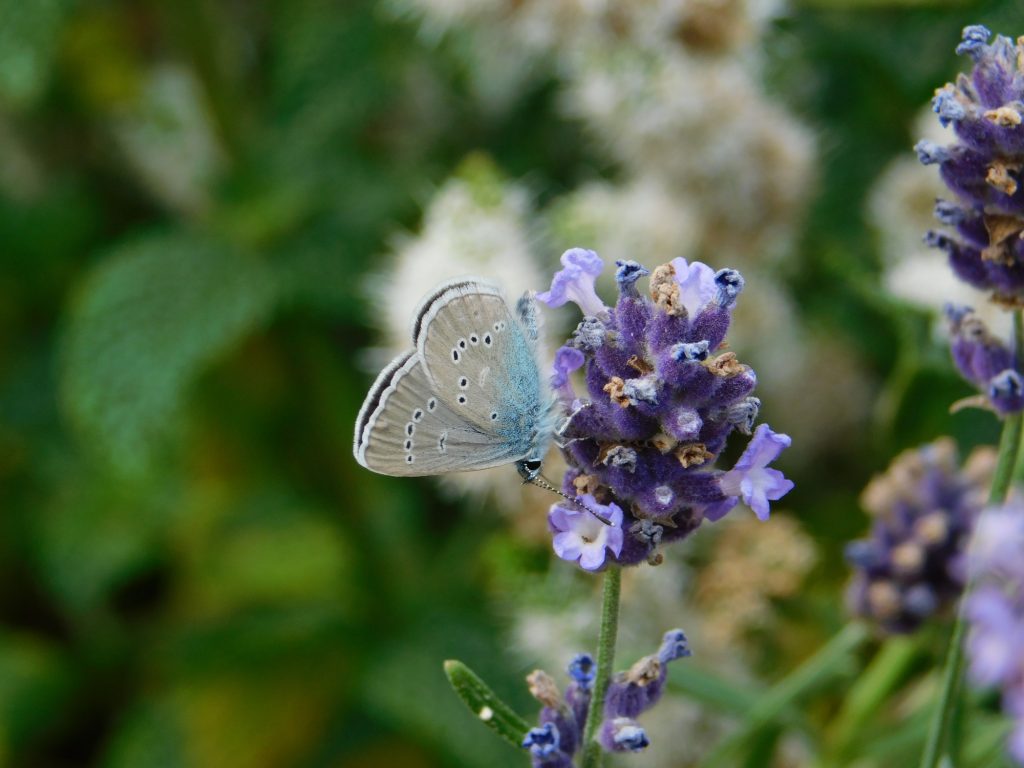
3. Obtain a Yield
If you’re investing the time and money to create a backyard permaculture garden, chances are that you want to get something out of it. For most people, they’ll want to grow food. But there are many other kinds of yields that you can get out of a permaculture backyard too.
Using a backyard permaculture design means that you’ll be creating more biodiversity. That means you’ll get a yield in terms of more birds and butterflies to look at, too.
Plus you’ll promote populations of beneficial insects that will help to keep down the number of annoying pests like mosquitos in your yard.
Or, the yield you get might be as simple as creating a nice peaceful environment for you to relax in at the end of the day.
4. Apply Self-Regulation and Accept Feedback
This means accepting the results of your permaculture design and adjusting them accordingly. You might really want to grow a particular plant in your backyard, but it might keep dying over and over no matter what you do.
That’s some pretty strong feedback that it’s not suited for your particular climate or soil conditions, so you should consider something else instead.
5. Use and Value Renewable Resources and Services
If you’re interested in creating a permaculture backyard, then making it environmentally friendly should be a natural extension. You don’t want your yard to rely on the use of oil and gas products, synthetic chemicals or anything else that isn’t renewable.
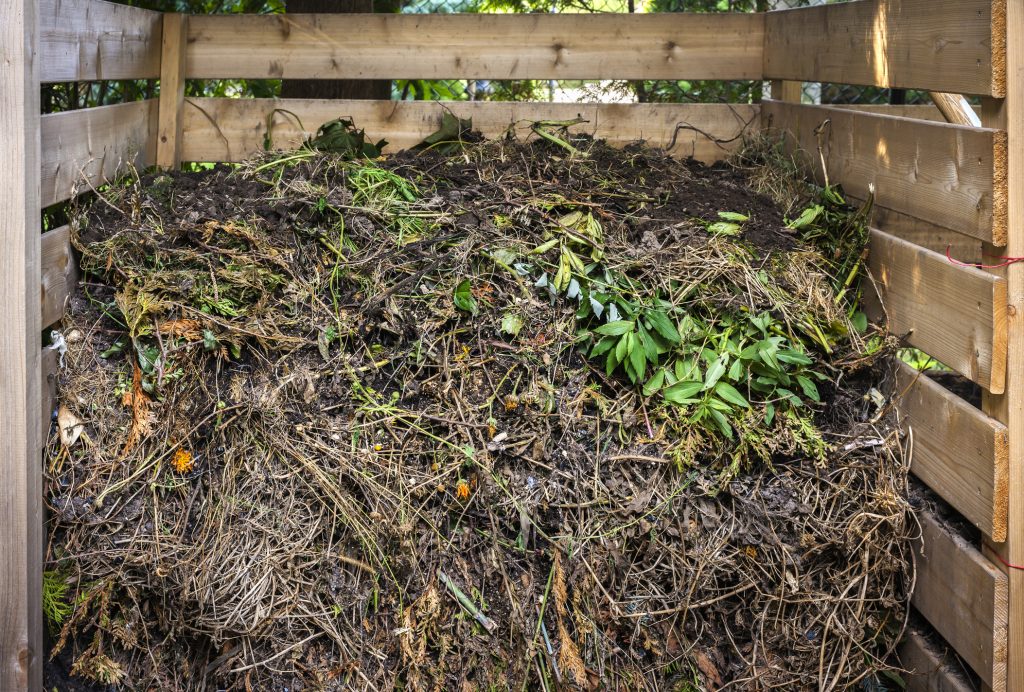
6. Produce No Waste
In a permaculture backyard, you should have a closed-loop system where theoretically nothing ever needs to leave your property. All of your leaves, sticks and other yard waste can be composted and turned back into rich fertilizer to nourish your garden.
Even if you’re keeping backyard chickens, their manure can be composted to ensure no external waste is produced.
New to permaculture? Our 11 Best Permaculture Books to Read This Year are a great way to get up to speed.
7. Design From Patterns to Details
The natural world is full of patterns that we can use to take inspiration from. Take a step back and look at any patterns that might already exist in your backyard.
Take advantage of natural high or low points in your yard that might impact where water naturally flows. Look at where the most plant life in your yard is already naturally growing and embrace that instead of trying to work around it.
In a permaculture backyard, your job will be a lot easier if you work with existing patterns instead of trying to level out the ground and make straight lines everywhere.
8. Integrate Rather Than Segregate
The natural world is full of connections. However, many modern gardeners will try to segregate their gardens. They’ll have a row designated for just tomato plants, another for just bean plants and so on.
A permaculture garden is one that takes advantage of beneficial relationships between plants. By intermixing groups of plants instead of creating monocultures, we can naturally control pest populations, improve soil quality and more.
9. Use Small and Slow Solutions
We live in a fast-paced society where everyone wants things immediately and change is expected to happen overnight. But that’s not how nature works. Slow and steady wins the race!
It can be tempting to make major changes to your backyard. Especially through the addition of external resources like fertilizer and pesticides.
However if you try to make too large of a change too quickly, it can be hard for the natural ecosystem to adjust.
Often you will get great results in the short-term, but you’ll throw off the overall balance and make things harder for yourself in the long-term.
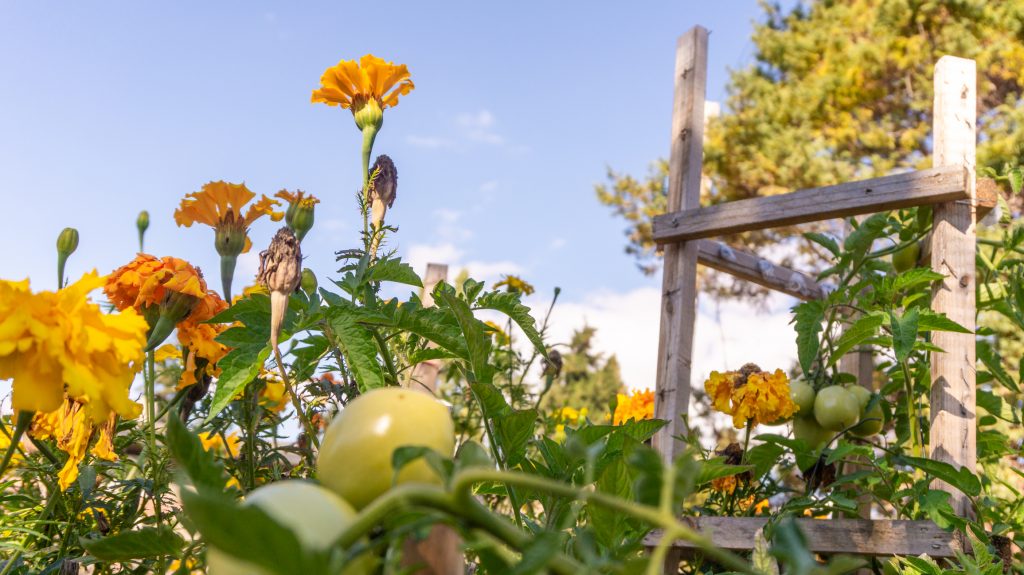
10. Use and Value Diversity
Most modern farms are designed around growing fields of nothing but wheat or corn for as far as the eye can see. It should be pretty obvious that this isn’t a very sustainable way to manage a parcel of land.
Not on a large-scale, and certainly not in a backyard either. The more diverse your backyard is in terms of plant, insect and animal life, the more resilient it will be.
11. Use Edges and Value The Marginal
Permaculture suggests that areas where two different habitats or ecosystems meet are usually more rich and productive than a single habitat on its own.
Your small backyard might not be able to fit whole meadows and woodlands, but you can create smaller versions of these edges.
Take for example the edge between a garden and a pond.
12. Creatively Use and Respond to Change
Nothing in nature stays the same forever. Natural systems are constantly in a state of flux and growth. How you view and react to change will play a big part in how your permaculture backyard develops.
For example, if a tree in your yard falls down, you can look for creative ways to make use of the extra wood. Plus the tree will no longer be shading out a specific area of your yard and may give you a new place to grow additional crops.
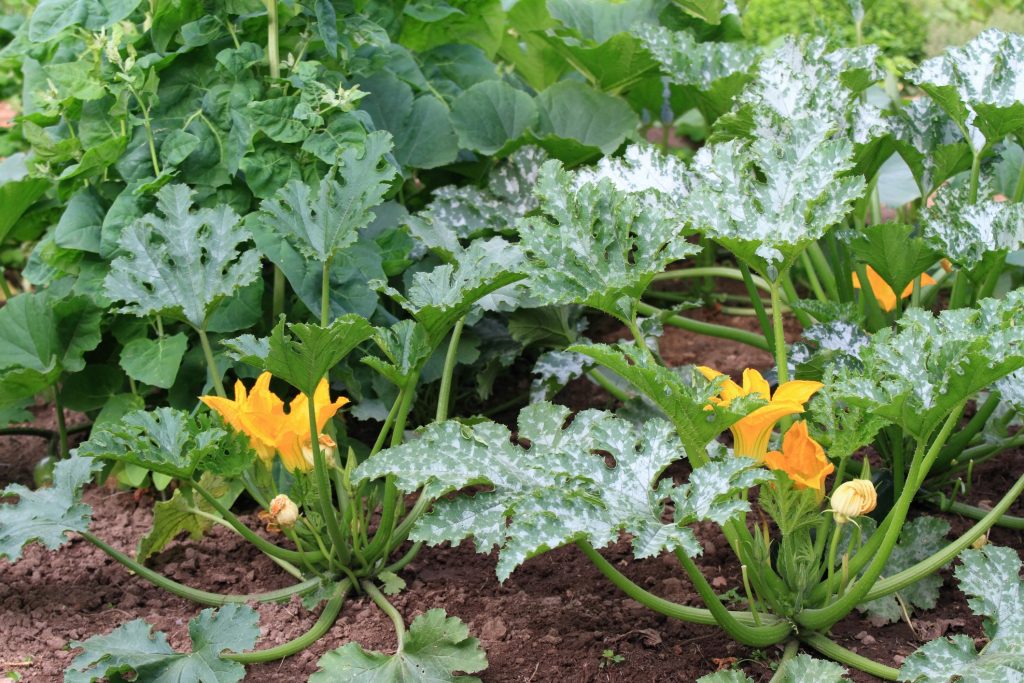
Designing a Permaculture Backyard (Step by Step)
Now it’s time to discuss some ways that you can put the above theories into practice when designing your permaculture backyard.
Step 1: Take A Step Back and Look At The Big Picture
Following the principles of “observe and interact” and “design from patterns to details,” we know that we should take some time to look at the existing natural systems in our backyard before we start designing a new permaculture system.
If you’re just moving onto a new property, it might be worth waiting a full year to see how your property behaves through all four seasons before you start to make any changes.
Your yard may look dry when you move in during the summer. But next spring after some heavy rainstorms, it might become apparent that there are some low points in your backyard where water naturally collects.
Likewise, the spot that you’re planning to put your garden might get lots of sunlight in the spring. But as the sun’s position shifts throughout the year, you might find that particular part of your yard is completely shaded out in the late summer and autumn.

Step 2: Start Collecting Energy and Resources
Even before you create a garden in your backyard, you can start to collect resources and minimize your amount of waste.
Setting up a composter should be one of the first things that you do when designing your backyard permaculture garden. It will take many months for your kitchen scraps to start breaking down into rich compost that you can use.
So it’s best to start cutting down on kitchen waste and building up your compost as soon as possible.
Collecting rainwater is another thing that you can start doing at any stage of designing your permaculture backyard. Most likely you’ll be diverting rainwater off your roof’s gutters and into a rain barrel or cistern.
You can also begin to set up solar panels or wind turbines in places that won’t impact your permaculture designs.
Step 3: Choose the Plants for Your Permaculture Backyard
When you’re creating your backyard permaculture design, selecting which species you’ll grow is a big part of the process.
Keep the principle of using and valuing diversity in mind during this process. You’ll want to select a wide variety of different plants that work well together.
Be sure to read 16 Permaculture Plants You Should Have in Your Garden for recommendations.
Pick native plants that are best suited for your area whenever possible.
Step 4: Make Your Job Easier
One permaculture principle that will help to cut down on yard work is applying self-regulation. That means creating systems that can take care of themselves with minimal impact.
Choose plants that won’t need much watering, soil amendments or extra protection over the winter months.
If you hate mowing your lawn, why not replace your grass with something else? Plants like clover, creeping thyme or corsican mint will grow in thick like grass but will stay low to the ground. You won’t have to spend time with the lawnmower once a week any more!
Don’t feel like you have to do something a certain way just because that’s how all your neighbors are doing it. Designing a permaculture backyard is all about creating a system that works for you instead of against you.
Step 5: Keep What Works and Change The Rest
After you’ve had your permaculture backyard for a year, chances are you’ll notice there are some parts of your design that are working exactly as intended. Others may not be performing in the way that you expect.
That’s when it’s time to follow the principle of responding to change. Focus on the parts of your design that seem to be thriving and build upon those. At the same time, be open to changing things that aren’t working as you expected.
Sometimes certain plants that seem like they’d be suited for your backyard just won’t grow for whatever reason. Don’t get too hung up on it. Just move on to trying other species instead.

Step 6: Think Long-Term
It might be tempting to create a permaculture garden that will produce a quick yield. But don’t forget the principle of using small and slow solutions.
Many standard fruit or nut trees won’t start producing a yield for five years or more after you plant them. If you’re planning to live in your current home for the next 20 years or more, then it makes sense to start planting these longer-term plants right away.
There’s an ancient Chinese proverb that says the best time to plant a tree was 20 years ago. The second best time is now. We can’t help but agree with that sentiment!
In a well-designed permaculture backyard, you’re going to need to have plants from most layers of the food forest.
To learn about food forests and plant guilds, check out our article How To Create A Permaculture Food Forest, Forest Garden or Forest Farm.
Your backyard might not be large enough to include large canopy level trees like chestnuts or walnuts. But most yards can fit at least a couple of small nut or fruit trees.
Since your trees will take time to grow, it’s best to get them in the ground first before any of your perennials or annual plants.
Step 7: Enjoy The Bounty
Remember that one of the principles you followed when designing your permaculture garden was to obtain a yield. Be sure to take advantage of the fruits of your labor.
Getting lots of fresh vegetables and fruit to harvest is one of the biggest rewards you’ll get from all the work you put into designing your permaculture backyard.
If you want to focus on growing lots of edible plants, our resource How To Start A Permaculture Garden: Step By Step Beginner’s Guide will help you out.
Permaculture Backyard Tips
Here are a few additional thoughts to keep in mind when designing your permaculture backyard:
- Don’t forget to maximize vertical space by using trellises or planting a milk crate garden. See our article How to Plant a Milk Crate Garden for step-by-step instructions.
- Set up composters near your garden to make it easier to transport materials back and forth.
- Use whatever materials you’ve got on hand. Spare pieces of wood, or even things like cans and bottles can be upcycled into planters or garden borders. Empty toilet paper rolls or old newspapers can be used to create biodegradable planting pots for seedlings.
- Don’t take on more than you can handle! Start by converting a portion of your yard this year instead of trying to do the entire thing at once. Then you can slowly expand upon it.
- Plant things like salad greens or herbs that you’ll use on a daily basis close to your house. Put staple vegetables that don’t need daily attention further back, and fruit trees furthest of all.
- Use grass clippings or leaves from last fall as a mulch to protect the soil. It will help to keep in moisture and shade out weeds.
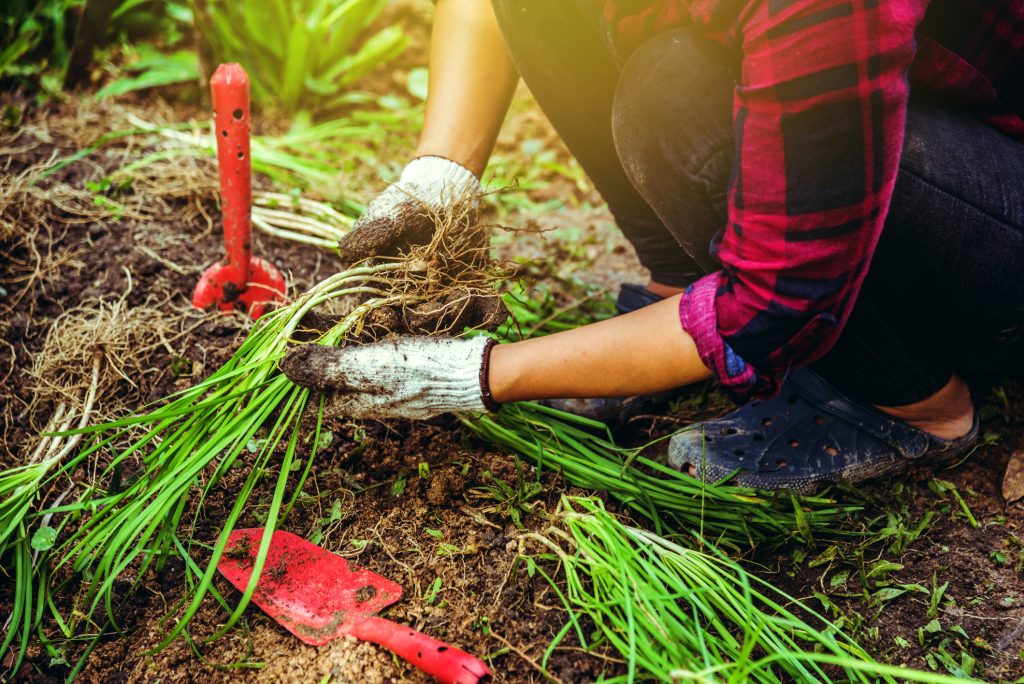
Final Thoughts
Designing your backyard using permaculture principles is a win-win situation all around.
It will produce a yield for you in terms of fresh fruits and vegetables. You’ll also create a more sustainable and self-regulating environment that needs less maintaining.
Beneficial insects and wildlife that you’ll attract as a result will also help to cut down on pests, and generally make your yard a nicer place to sit and relax in. So why not start designing a permaculture backyard today?
No matter what scale of a design you’re starting with, there are 12 important permaculture principles that you’ll want to keep in mind. As long as you follow these principles, you should manage your land in a way that leads to natural ecosystems flourishing in a more regenerative and resilient way.
To learn more about designing permaculture, check out our permaculture hub.
